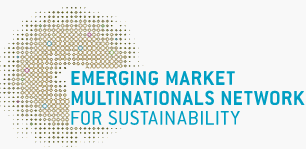Home > Best Practices > Best Practices List >
China Three Gorges Corporation: Exploring new approaches to poverty alleviation by developing photovoltaic industry
2018-04-16Sino-Swedish CSR Websiteadmin0010

Company profile
The China Three Gorges Project Corporation was founded on September 27, 2009, and was renamed the China Three Gorges Corporation (CTG) on September 27, 2009. Headquartered in Beijing, CTG is a wholly state-owned enterprise with a registered capital of 149.537 billion yuan. It positions itself as a clean energy group focusing on large-scale hydropower development and operation. Its main businesses cover the construction, international investment and contracting, development of wind power and solar energy among other renewable energies, comprehensive development and utilization of water resources, as well as providing relevant professional technical services. Upon authorization of the State, CTG developed, constructed and operated cascade hydropower stations on the lower reaches of Jinsha River, composed of four world-class large hydropower stations (i.e. Xiluodu, Xiangjiaba, Wudongde and Baihetan).
After more than 20 years of rapid growth, CTG has formed the core ability to develop, build, manage and operate large hydropower projects. While making every effort to strengthen and optimize the main business of hydropower, it has expanded the industrial value chain, accelerated the development of new energy businesses such as wind power and solar power, and steadily expanded the international hydropower business. It also actively carried out financial and investment businesses and formed synergistic benefits to increase competition. CTG has become the largest hydro- power development enterprise worldwide and the biggest clean energy group in China.
Challenges
Quyang County is a national level poverty-stricken county. It was listed as a concentrated destitute area of Yanshan mountains and Taihang mountains by the state in 2011, with a poverty population of 176,400, accounting for 28% of the whole population. Located in the transition zone of Taihang mountains to North China Plain, Quyang County is a half-mountainous county, 60% of which is covered by mountains, 10% by water and 30% by land. The mountainous area reaches 1,360,000 mu, taking up 54% of the total area. Among this, 46,000 mu is not exploited mountainous area, unsuitable for the growth of forest. Although these mountains are barren, the average annual sunshine at this area reaches 2,600 hours. It belongs to an area rich in solar energy resource, suitable to build centralized photovoltaic power station.
Photovoltaic poverty alleviation is a new way to help poor areas out of poverty. The Working Plan on the Implementation of Photovoltaic Poverty alleviation Project and Implementation Opinions on Accelerating Energy Development and Construction in Poverty-stricken Areas and Promoting Poverty Alleviation, issued by the National Energy Administration and the Poverty Alleviation Office of the State Council, propose to construct targeted photovoltaic poverty alleviation projects and carry out photovoltaic poverty alleviation in 35,700 registered poor villages of 451 poverty-stricken counties of 15 provinces or regions with good light conditions. It aims to complete the construction of photovoltaic poverty alleviation projects for 2 million registered poor households and increase their income by over 3,000 yuan.
Solutions
Responding to the appeal of the nation actively, CTG implements the strategy of developing clean energy to give full play to its professional strength. It conducts the Quyang photovoltaic program to transform the barren hills which have abundant sunlight and are rich in solar energy and suitable to build centralized photovoltaic power station into a sun mountain which can be farmed and generate power. The Quyang photovoltaic program sets a model for CTG to develop photovoltaics in mountainous areas, which creates many Quyang models in terms of cooperation with the local government, project management and application of new technology. It adheres to the principle of combining project development with environmental protection and poverty alleviation and takes the road of technological innovation in project development.
Protecting environment in project development
CTG upholds the principle of green energy and eco-development to achieve the combination of project development with environmental protection and arable land (forest land) conservation. The company makes full uses of the waste mountains and hills in Quyang to develop photovoltaics and tries its best to use less or no arable land or forest land at all to save limited land resource. It gives full play to the advantages of spiral scaffolds and uses less or no cement filling to prevent pollution and damage to land. The company also proposes a new energy development concept of “photovoltaics +”, which combines photovoltaics development with traditional industries like eco-plantation, sightseeing agriculture, and popular education.
Combining the project development with poverty alleviation
CTG integrates photovoltaic projects development into the “forty thousand and one thousand” project of Quyang’s poverty alleviation and development. It helps the local to get rid of poverty from aspects of land lease compensation, power station construction and labor employment. Meanwhile, it signs tripartite labor agreements with the local government and labor agencies, which prescribes labor agencies to give priority to employ workers of registered poor households in the construction of power station to facilitate targeted poverty alleviation. Except for granting certain fund compensation to the local farmers in the development of projects and exploitation of waste mountains and hills, the company gives priority to employ local labor forces in project and road construction, weeding in photovoltaic areas and photovoltaic plate cleaning, which effectively solves the problem of helping farmers work near home and at increase their income. At the same time, it also provides skill training to some peasant workers to equip them with expertise in one specialty and help them become the main force for photovoltaic construction in mountainous areas.
Exploring technological innovation for project development
Three Gorge Corporation takes an initiative to explore new concepts, new technology and new methods for photovoltaic construction in mountainous areas to promote technological innovation in photovoltaic industry. In the first phase of the project, it adopts the technology of mountain steel girder curtain wall in the steep slope region. For the second phase of the project, it uses the piling technique of fast anchor bolt, mountain micro-hole and shallow well technology and GFR, a new scaffold material, which lowers the cost and improves the efficiency. In the third phase, it adopts the tandem inverter scheme to achieve trace of multiple MPPT, which not only improves the power generated by the photovoltaic power station by 3% to 5%, but also explores new path for the development of inverter technology. The technology of piling by pile-driver in the fifth phase sets an example for photovoltaic construction in China’s mountainous area with steep slopes.
At the aspect of power operation, the company attempts to use patches which can read the temperature to achieve temperature monitoring and control in the linking parts of electrical leading circuits. The application of timing switches for lamps of 35kv in the switching room saves energy and reduces consumption.
Achievements
Social benefits
Increasing employment for farmers and facilitating targeted poverty alleviation. Quyang photovoltaic program provides local farmers with 25 years of compensation for land leasing at one time, subsidizes them 150 yuan for each mu of waste mountain and 800 yuan for each mu of waste land each year, which increases their regular income. The employment of surrounding farmers for project construction and daily maintenance of facilities creates wage income and assists famers to work in places near their homes, which is significantly effective in alleviating poverty. Since the beginning of the first stage construction of Quyang photovoltaic program in 2013, it has created nearly 300 jobs for the local, recruited 200,000 workers, and paid each 5,000 yuan of remuneration for personal services in average. Over 8,000 famers from the surrounding 8 poverty-stricken villages benefit from this.
Saving land resource and improving ecological environment. Quyang photovoltaic program covers nearly 10 thousand mu of waste mountain and land, saving land resource by over 6,000 mu. The photovoltaic plates can shield direct sunlight, having a positive effect on protecting soil on the southern slope. The “photovoltaics + plantation” model improves the local soil environment and promotes the virtuous cycle. Compared with thermal power station of the same scale, the new energy Quyang photovoltaic power station of Three Gorges can save standard coal by 84,000 tons, sulfur dioxide, nitrogen oxides and other pollutants by 300,000 tons each year, which greatly reduces environmental pollution, improves the local energy structure and environmental conditions, and contributes to the smog governance in Hebei province.
Economic benefit
Expanding photovoltaic market and building a brand for Three Gorges. The Quyang photovoltaic program, started in 2013, with a construction scale of 200 megawatts and a total investment of 2.5 billion yuan, can provide around 240,000,000 kilowatts of green power at least for the local and pay over 50 million yuan of various taxes each year after it is completed. It is the biggest single unit photovoltaic program and the nation’s largest mountainous photovoltaic program. The Quyang model is highly concerned and supported by the State Council and the Party Central Committee. It was chosen as an exemplary project and key poverty alleviation program by the National Energy Administration, Hebei provincial government and Baoding municipal government in succession. It has gradually developed into a new energy name card of CTG in the field of mountainous photovoltaics.
Prospect
Quyang model has a good demonstration effect and promotion value. Since CTG started to develop mountainous photovoltaics in Quyang County, many new energy companies have settled in Quyang, and the mountainous photovoltaic industry has become an important pillar industry in Quyang County, which will help Quyang's rapid economic and social development and help the entire county get out of poverty.
Best Practices
- The 100-year brand — Air Liquide also has a sense of juvenile
- Beijing Public Transportation Corporation: Developing green transportation to build a harmonious and livable capital
- CGN: Building a modern factory in barren deserts and developing a new win-win cooperation model along “Belt and Road”
Upcoming Event

All the materials on the site “Source: XXX (not from this site)” have been reprinted from other media. They do not imply the agreement by the site.
All the materials with “Source: CSR-China Website” are the copyright of CSR-China Website. None of them may be used in any form or by any means without permission from CSR-China Website.
GoldenBee Official WeChat
Copyright © Csr-china.net All Right Reserved.
京ICP备19010813号










